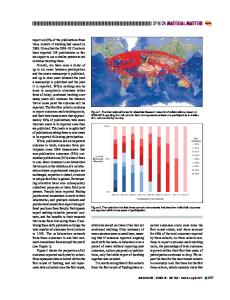Defects in Intermetallic Compounds: How Do They Differ From Those in Ordinary Metals?
- PDF / 4,125,109 Bytes
- 8 Pages / 576 x 777.6 pts Page_size
- 98 Downloads / 324 Views
MRS BULLETIN/JULY 1995
designated atoms, the crystal is said to be fully ordered. The crystal will be partially ordered if a certain fraction of the sublattice sites is taken up by atoms that would otherwise sit at other sublattices; this fraction is used to describe the degree of long-range order. Lattice defects in intermetallic compounds differ from those in ordinary metals because of the constraints placed on the defects by the superlattice crystal structure. Take the point-defect vacancy, for example, again referring to the simple two-dimensional superlattice. Consider a vacancy sitting initially on the A sublattice (Figure lb) where the nearest atoms surrounding the vacancy are those on the B sublattice. The vacancy will move to the B sublattice when one of the nearby B atoms jumps to fill the vacancy (Figure lc). After the jump, however, this B atom will be on the A sublattice, creating three B-B nearestneighbor bonds that are absent in the state of perfect order. In other words, this B atom, by jumping to fill the vacancy on the A sublattice, has become a point defect itself. An atom sitting on a "wrong" sublattice is known as an antisite defect, a type of point defect not present in ordinary metals. Important differences also exist between dislocations and some planar defects in intermetallic compounds, and their counterparts in ordinary metals,
arising also from the constraints imposed by the long-range order. This article will discuss a few examples that best illustrate the differences between intermetallic compounds and ordinary disordered metals. For a systematic account of the subject, see a recent monograph on the subject.1 Point Defects: The Cycling Vacancies In regard to the vacancy jump depicted in Figure 1, clearly the energy increase caused by the vacancy moving from the A sublattice to the B sublattice depends on the energy of the antisite defect. The higher the energy of the antisite defect, the more difficult it is for the vacancy to be filled by a nearest atom. Taking into account only the interaction energy between the nearest neighbors Eit (i, j = A, B), the energy of the antisite defect of a B atom sitting on the A sublattice would scale with (£BB _ ^EAB). Similarly the relevant energy rise with a vacancy jumping from the B sublattice to the A sublattice will scale with (EAA ~ 0EAB)(a and β are parameters that depend on the crystal structure.) In other words the energy of the antisite defect differs for different sublattices. In some intermetallic compounds (e.g., NiAl) with strong bonding between unlike atoms (i.e., low EAB/ relative to EAA and EBB), the energy of the antisite defects is so high that they do not form even at very high temperatures. In such compounds, deviations from the exact compound composition, Nii-xAli+j, x > 0 , for example, can only be accommodated by leaving a certain fraction (up to x) of the Ni sublattice vacant, instead of "forcing" the extra Al atoms onto the Ni sublattice to become antisite defects. Such vacant lattice sites are known as constitutional vaca
Data Loading...











